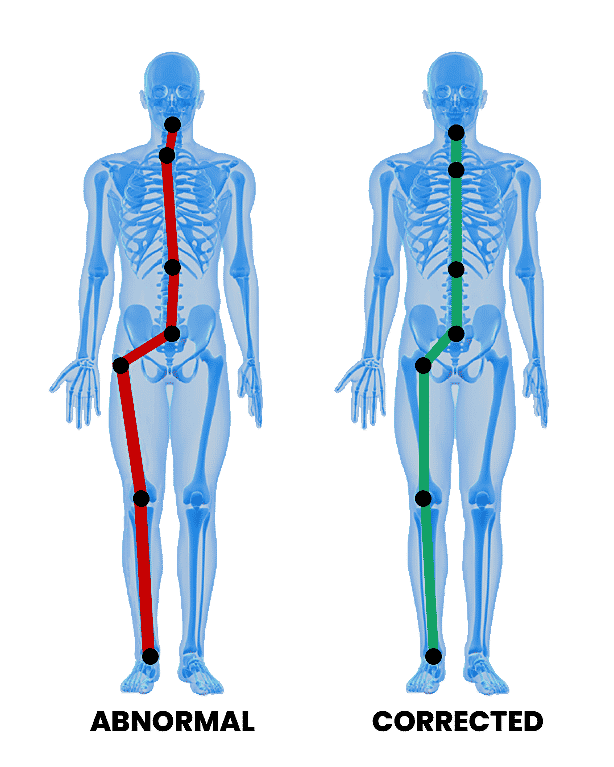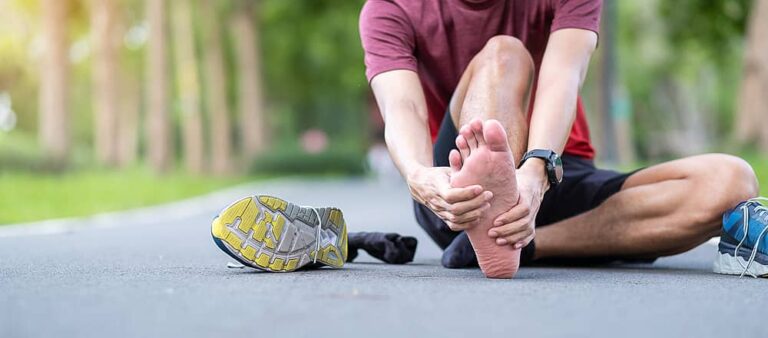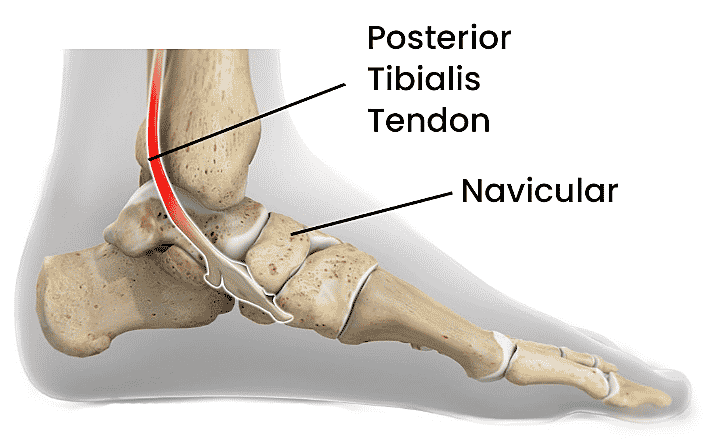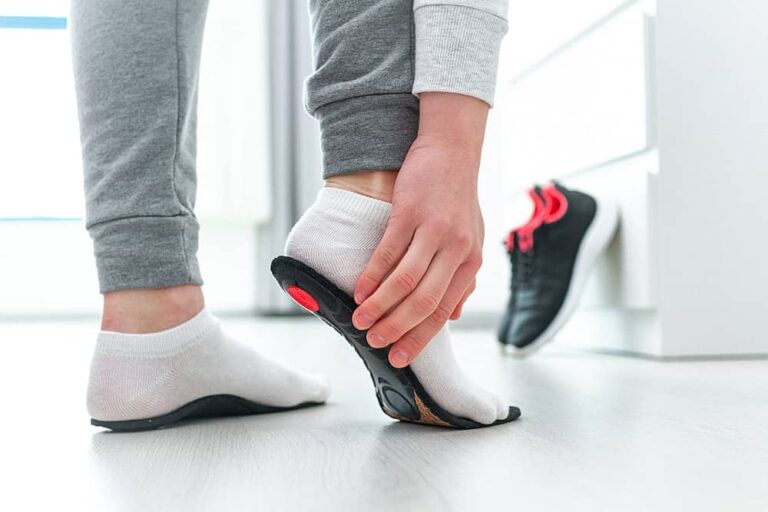All You Need To Know About Flat Feet In Singapore
April 22, 2022

If your feet appear to have a low or no arch which excessively roll inwards and downwards towards the floor when you’re standing, then it’s likely that you have flat feet.
In this article, we’ll explore all about flat feet — from its symptoms, types, causes and the wide variety of treatment options available, including surgery.
What Exactly Is Flat Feet?
Flat feet, also called Pes Planus, is a deformity that occurs when the arch of the feet collapses and comes into complete or near-complete contact with the ground.
The condition may be inherited (runs in the family) or acquired (developing over time, most often as a result of age or injury).
What Are The Symptoms Of Flat Feet?

When flat feet or pronation forces become excessive or abnormal, symptoms may occur in the following areas:

The feet, ankles, knees and hips together with the spine are aligned to support the weight of the body in daily activities. As such, when flat foot occurs, several symptoms may present themselves not only on the foot, but on the ankles, knees and even spine.
Most symptoms are related to pain and lack of strength in certain activities. Some patients can actually notice the deformities getting worse over time.
You may also notice that your shoes wear out faster on the inside edges, and you may observe some ‘bulging’ on the inside of your ankle.
How Many Types Of Flat Feet Are There?
There are three different types of flat feet:
Flexible Flat Feet
This is the most common form of flat feet. It means that there is an arch when there isn’t any pressure on the feet, but when you stand the arch collapses.
Rigid Flat Feet
With rigid flat feet, the feet have no arch on or off the ground and it cannot be manually forced back into their normal position on or off the ground. Usually flexible flat feet can lead to rigid flat feet when symptoms worsen over time.

What Causes Flat Feet In Both Children And Adults?
There are various causes of flat feet including:
- Genetics
- Weak arches
- feet or ankle injury
- Arthritis or rheumatoid arthritis
- Damage, dysfunction, or rupture of the posterior tibial tendon
- Nervous system or muscle diseases, such as cerebral palsy, muscular dystrophy, or spina bifida
Flat feet pain can also develop as a result of medical conditions, such as pregnancy, obesity, or diabetes.

In most cases of flexible flat feet, the initial problem always seems to involve the posterior tibial tendon. Due to genetics or inherited disorder of increased ligamentous laxity in some individuals, the strength component of the tendon that is responsible for lifting up the midsection of the foot and thus forming an arch, is weak. As such the arch is more collapsed.
With this, the architecture of the foot changes and affects the forces going through the joints, leading to pain and a worsening of the deformity over time.
Even age and the daily use of the feet can cause the posterior tibial tendon (the primary support structure for the feet arch) to weaken.
If the tendon becomes inflamed (tendinitis) or tears after overuse, the damage to the tendon may cause the feet arch to flatten.
How Does Having Flat Feet Affect Your Body?
Chronic Muscle Strain
Flat feet are not as proficient at keeping the body stable as feet that have a normal arch.
As a consequence, people with flat feet are at a higher risk of developing chronic muscle strain as the muscles of the body are forced to compensate for the feet’s lack of stability.
While your body may be able to adapt to your feet’s lack of support during everyday activities, when you increase your activity level by even a small amount, it can cause significant pain and muscle strain.
Leg and Back Pain
Normal feet are designed to keep the entire lower body in the proper configuration when you stand or walk.
However, flat feet do not provide the same foundation for healthy posture.
As the feet collapses toward the ground, the lower legs tend to rotate inward. This inward rotation can affect the entire leg, including the hips, leading to long-term leg and back pain.
Musculoskeletal Problems
Flat feet are a common cause of general musculoskeletal pain and problems.
Your body’s balance begins in the feet; when the feet do not provide proper support, it can raise your risk for joint problems caused by poor posture and unnatural gait.
Individuals with flat feet could be more likely to experience injury or pain in the feet, ankles, knees, or hips.

What Options Are Available For Flat Foot Treatment?
Treatment for flat feet may range from non-invasive options to surgical intervention to help relieve feet pain and improve function for patients.
If you suspect you have flat feet, we recommend an examination and treatment as soon as possible.
Treatment in the early stages of flat feet can prevent progression to the later stages.
Non-Surgical Treatment
If you experience symptoms with flexible flat feet, nonsurgical treatment options include:
Activity Modifications. Cut down on activities that bring you pain and avoid prolonged walking and standing to give your arches a rest.
Weight Loss. If you are overweight, try to lose weight, as putting too much weight on your arches may aggravate your symptoms.
Orthotic Devices. Custom orthotic devices for your shoes to give more support to the arches.
Immobilization. In some cases, it may be necessary to use a walking cast or to avoid weight-bearing completely.
Medications. Nonsteroidal anti-inflammatory drugs (NSAIDs), such as ibuprofen, help reduce pain and inflammation.
Physical Therapy. Ultrasound therapy or other physical therapy modalities may be used to provide temporary relief.
Shoe Modifications. Wearing shoes that support the arches is important for anyone who has flatfeet.
Orthopaedic Surgery
For some patients whose pain is not adequately relieved by other treatments, flat foot surgery may be considered.
A variety of surgical techniques is available to correct flexible flat feet, and one or a combination of procedures may be required to relieve the symptoms and improve feet function.
Your doctor will consider the extent of your deformity based on the x-ray findings, your age, your activity level, and other factors.
The length of the recovery period will vary, depending on the procedure or procedures performed.
Let Us Help You With Your Flat Feet Pain And Regain Your Quality Of Life.
Dr. Ananda Vella is a Singapore and Swiss-double-fellowship-trained MOH-accredited orthopaedic specialist consultant surgeon, As a former consultant from the Singapore General Hospital and Sengkang General Hospital and with more than 20 years of experience, Dr Ananda treats a variety of orthopaedic bone and joint conditions, including in his subspecialty focus of foot and ankle conditions, hip and knee pains, as well as sports injuries. Dr Ananda is also well-versed in minimally invasive surgical techniques, including having performed the first lateral total ankle replacement surgery in South-east Asia to improve outcomes for patients with severe arthritis.
Dr Ananda regularly practices in 3 clinics across Singapore and is accredited to operate in all private hospitals in Singapore. Should you have any queries or need any further assistance, please do not hesitate to schedule an appointment with our Dr Ananda by WhatsApp at 8860 0642 for assistance. Alternatively, please leave us a message via the enquiry form and we will get back to you as soon as possible.
(All Rights Reserved)



